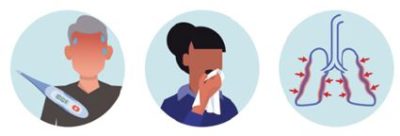How contagious is COVID-19? According to Scientists, the Coronavirus is about twice as contagious as the flu. The bad news is that it has only taken three months for COVID-19 to move across the world. It has infected millions and killed nearly 212,580 people (as of April 28, 2020.)
The good news is that the infection rate is not a static number. It is greatly affected by behavior. That’s where you come in. You can “Do the Five.”
The good news is that the R0 factor is not a static number. It is greatly affected by behavior. That’s where you come in. You can “Do the Five.”
1. Wash your hands often with soap and water for at least 20 seconds. Especially after you have been in a public place, or after blowing your nose, coughing or sneezing. If soap and water are not readily available, use a hand sanitizer that contains at least 60% alcohol. Cover all surfaces of your hands and rub them together until they feel dry.
2. Cough into your elbow. If you feel you must sneeze, go outside. According to research by scientists at the Massachusetts Institute of Technology, coughing spreads droplets as far as 18 feet and sneezing as much as 24 feet. These droplets stay suspended in the air for up to 10 minutes. Throw used tissues in the trash and wash your hands.
3. Avoid touching your eyes, nose, and mouth. It’s not easy. You can infect yourself if you touch an infected surface and then rub your eyes. Studies vary greatly but indicate that many people touch their face about 20 times an hour. One purpose of a facemask is to reduce the number of times people touch their nose and mouth.
4. Social distancing. Who even heard of “Social Distancing” before March 2020? The CDC advises that the virus is thought to spread mainly from person-to-person. It transmits through respiratory droplets produced when an infected person coughs, sneezes, or talks. Therefore, maintain a distance of at least three feet and preferably six feet. Compared to the other controls, this is not too difficult. You or someone you meet may be infected with the virus and not show any symptoms (Fever, cough, shortness of breath). So behave as if everyone may be infected, including yourself. If you visit with the elderly, sit six feet from them. Make one big trip to the grocery store instead of many small trips. If you are in a high risk group, send a family member in a low risk group to the store. High risk groups include people with lung disease, heart conditions, immunocompromised, over 40 BMI, diabetics, kidney disease, liver disease, or over age 65.
5. Stay home if you feel sick. Every sick person creates a risk of infection to others. So stay home if you are sick and encourage your co-workers to do the same. The life you save may be your own, or your mothers.

